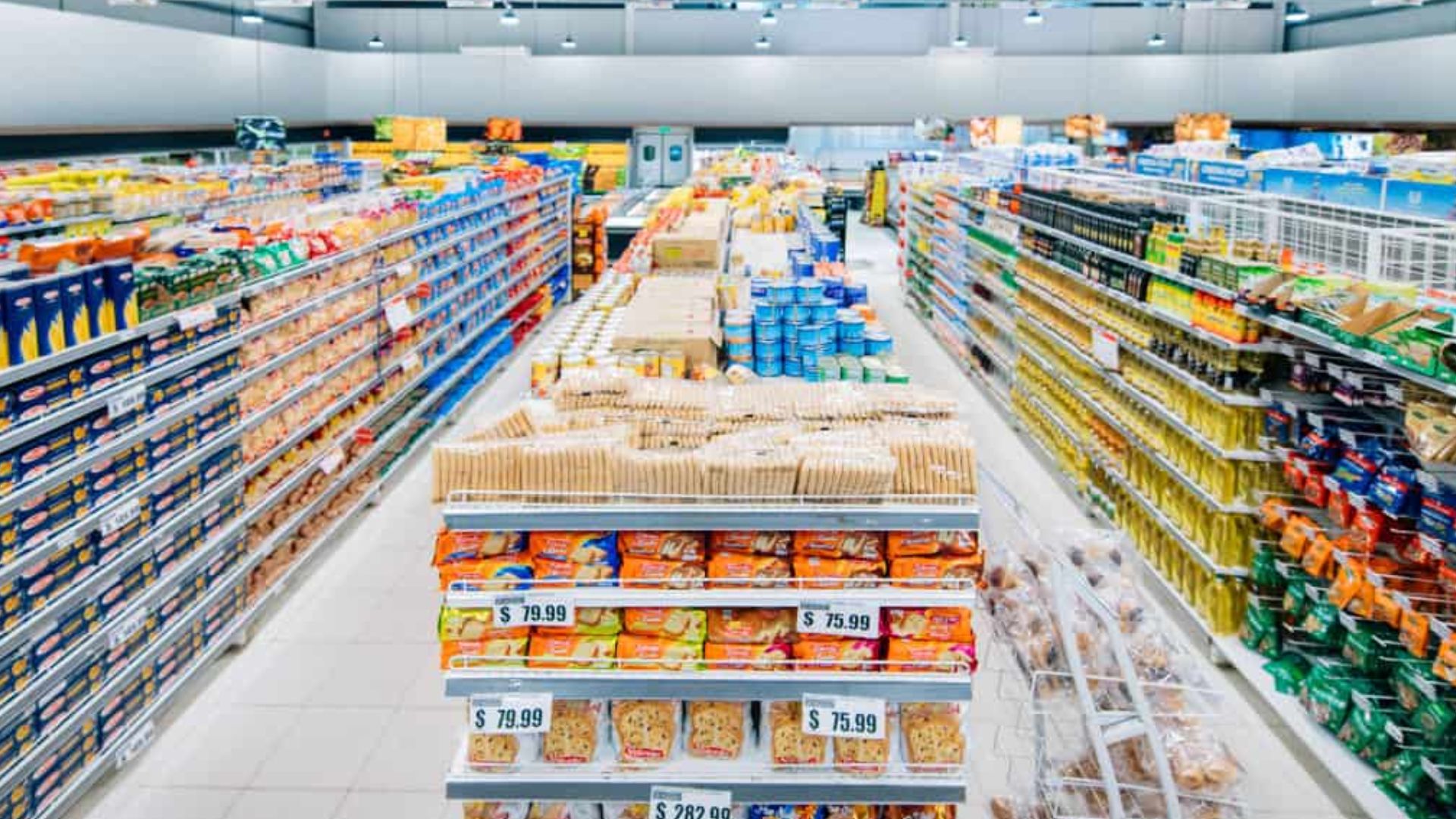Maximizing shelf space is an art that can significantly impact sales and create a seamless shopping experience for customers. One of the best tools to master this art is a visual layout strategy using a planogram, that determines exactly how and where products should be placed on shelves to capture attention, optimize space, and boost sales. According to a report by the National Association of Retail Marketing Services, ensuring compliance with these layouts can increase retail profits by 8.1% by minimizing lost sales opportunities caused by overstock and stockout situations. This article explores the importance, features, and types of these strategic layouts, along with practical guidelines for creating and implementing them effectively.

What is a Planogram?
A planogram is a detailed visual representation that outlines the arrangement of products on retail shelves. It serves as a blueprint for how merchandise should be displayed to maximize product visibility and enhance the customer shopping experience. These layouts can range from simple diagrams illustrating the basic layout of shelves to complex designs that incorporate specific product placements, sizes, and even pricing information.
They take into account various factors, such as the category in consideration, consumer buying behavior, seasonal trends, and product relationships, to determine the most effective placement of items. For instance, frequently purchased items may be placed at eye level to make them more accessible, while complementary products can be positioned near one another to encourage cross-selling.
Effective planograms help in managing inventory levels, minimizing stockouts and overstocks, and ultimately improving overall sales execution performance. It also allows retailers to create a consistent shopping experience that not only attracts customers but also encourages them to spend more time and money in the store. With their strategic use, CPG brands can significantly enhance the efficiency of their merchandising efforts and drive profitable growth.
Why are Planograms Important in Retail?
Planograms are essential in retail because they provide a structured approach to product placement, ensuring a balance between customer experience and profitability. Brands can strategically position items to maximize visibility, influence purchasing behavior, and make the best use of shelf space. Here’s why they are indispensable for retail success:
- Optimized Shelf Space: These visual layouts help retailers utilize shelf space efficiently by allocating the right amount of space to each product category based on demand and profitability.
- Increased Sales Performance: Proper product placement can attract more attention and encourage impulse buying, directly leading to higher sales.
- Enhanced Shopping Experience: A well-structured visual strategy offers a logical flow, making it easier for customers to find products and resulting in a more satisfying shopping experience.
- Improved Inventory Management: With these layouts, retailers can keep track of stock levels more accurately, reducing the risk of overstocking or understocking products.
- Consistency Across Stores: For CPGs with products in multiple stores across multiple locations, visual layouts ensure uniform product placement, maintaining brand identity and a consistent shopping experience for customers.
By leveraging these benefits, CPGs along with their retailers can align their merchandising strategy with customer expectations, ultimately driving sales, profitability and brand loyalty.
Now that we understand how planograms drive customer engagement, let's dive into the essential features that make them effective in retail strategy.
Key Features of a Retail Planogram
A planogram serves as a schematic tool, offering detailed product placement guidelines.
These layouts include specifications such as:
- SKU numbers,
- product dimensions, and
- relevant positioning based on product type.
A well-designed planogram adapts to consumer behavior and preferences, ensuring that popular or seasonal products are given prominence while maintaining shelf balance. The goal is to avoid overcrowding while ensuring balanced shelf space for each item.
For example, smaller or niche products won’t be overshadowed by larger, more dominant ones if a proper system is followed. By considering these factors, retailers can enhance product visibility, boost sales, and ensure the smooth functioning of in-store operations.
Also read: How CPGs Can Achieve 100% Planogram Compliance in Retail Stores
With a solid understanding of the features, let’s explore the direct benefits of using them in retail environments.
Benefits of Using Planograms
The implementation offers a variety of advantages that go beyond visual merchandising:
Having understood the benefits, it’s crucial to recognize that different types cater to various retail strategies and objectives.
Types of Planograms
Planograms come in various formats. The type of planogram used can depend on factors like product demand, MSLs, brand reputation, and desired customer experience. Below are some common types of planograms and their unique benefits for retail strategy:
- Market Share-Based: These prioritize products with a larger market share, giving them premium shelf space to drive higher sales.
- Profitability-Based: High-margin products/MSLs are positioned more prominently, ensuring higher profitability for the retailer.
- Commercial Status-Based: Well-known brands often receive better shelf placement to capitalize on their reputation and consumer trust.
- Horizontal Placement: Products placed horizontally on shelves, particularly at eye level, can encourage impulse purchases.
- Vertical Placement: By stacking products vertically across multiple shelves, retailers can make better use of shelf space while offering more choices.
- Block Arrangement: Products are grouped by category or brand, and can be arranged either horizontally or vertically depending on the desired effect.
These types allow brands and retailers to tailor product placement strategies to meet business goals and create an engaging shopping environment. They also provide flexibility, if certain principles are followed.
Principles for Creating Attractive and Effective Planograms
A well-structured planogram goes beyond aesthetics—it’s a strategic tool that balances product placement and accessibility to boost retail performance. By following key principles, CPGs can ensure that shelves are organized in a way that maximizes both sales and shopping experience. Here are some essential principles to consider when designing a planogram:
- Abundance: Ensure that the entire product range is visible and available, especially for high-demand items.
- Visibility: Products should be placed in a way that enhances their attractiveness and encourages interaction.
- Consistency: Complementary products should be grouped together to make shopping more intuitive and increase basket size.
- Compatibility: Nearby products should not conflict in terms of messaging or purpose, as this can negatively affect sales.
- Efficiency: They should balance operational costs with sales potential, ensuring that high-value products are positioned for maximum profitability.
By adhering to these principles, CPGs can design effective planograms that align with customer behavior and business goals. Next, let’s discuss the steps involved in creating one.
Steps to Create a Planogram
Creating a planogram is a structured process that involves several key stages to ensure optimal product placement and shelf utilization. From conceptualizing the layout to final execution, each step requires careful planning and attention to detail. Below are the primary steps involved:
Step 1: Developing a Concept
This involves deciding on the general layout style, considering customer flow, and selecting the right trade equipment for shelving.
Step 2: Schematic Drawing
Create a detailed diagram that includes technical parameters such as shelf dimensions, product placement, and SKU numbers.
Step 3: Approval and Control
Once developed, it must be approved by management. Automated systems can then be used to monitor compliance and execution.
While these steps are essential, modern software tools can simplify the process of creation and management.
Planogram Software and Tools
With the complexities of modern retail, the creation process can be streamlined using advanced software tools. Programs like DotActiv, SmartDraw, and Shelf Logic provide intuitive interfaces for designing and adjusting planograms. These tools offer real-time data access, making it easier to adapt layouts based on consumer preferences and sales trends.
Moreover, planogram monitoring systems like Paralleldots enhance functionality by offering AI-powered analysis and automation for store audits. This allows CPGs and retailers to monitor planogram implementation and ensure compliance in real time, making necessary adjustments and correcting errors.
Also read: Planogram Compliance in Retail Strategy Using Image Recognition
Conclusion
Planograms are an indispensable part of any successful retail and sales execution strategy. From enhancing product visibility and optimizing shelf space to creating a consistent brand image, they provide a systematic approach to visual merchandising. Using tools like ParallelDots' ShelfWatch to automate and monitor planogram compliance can take improve overall retail execution performance and boost same-store sales.
Ready to improve your store’s layout and increase sales? Book a demo with ParallelDots today to see how their advanced image recognition solutions can help you implement effective planogram strategies.


